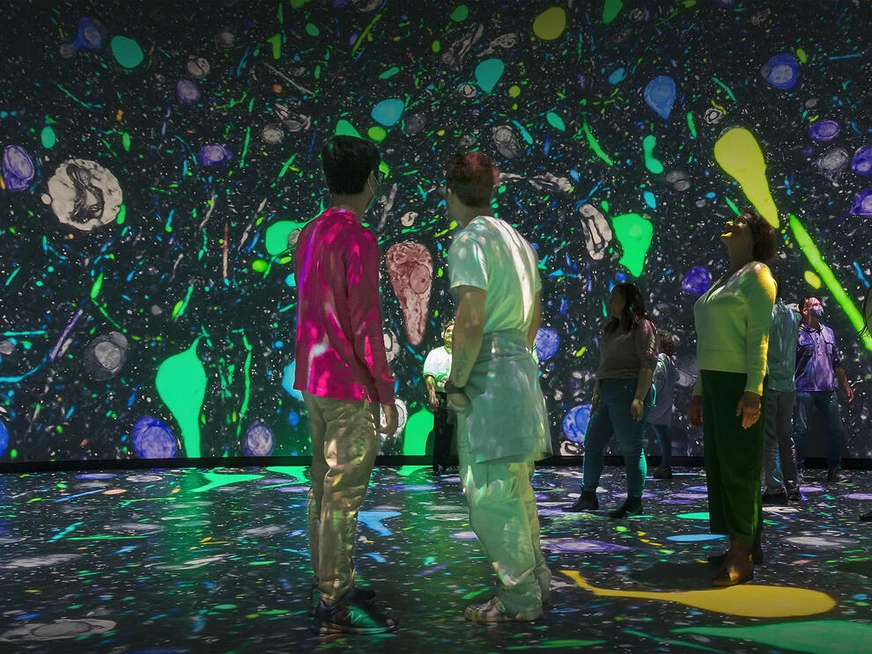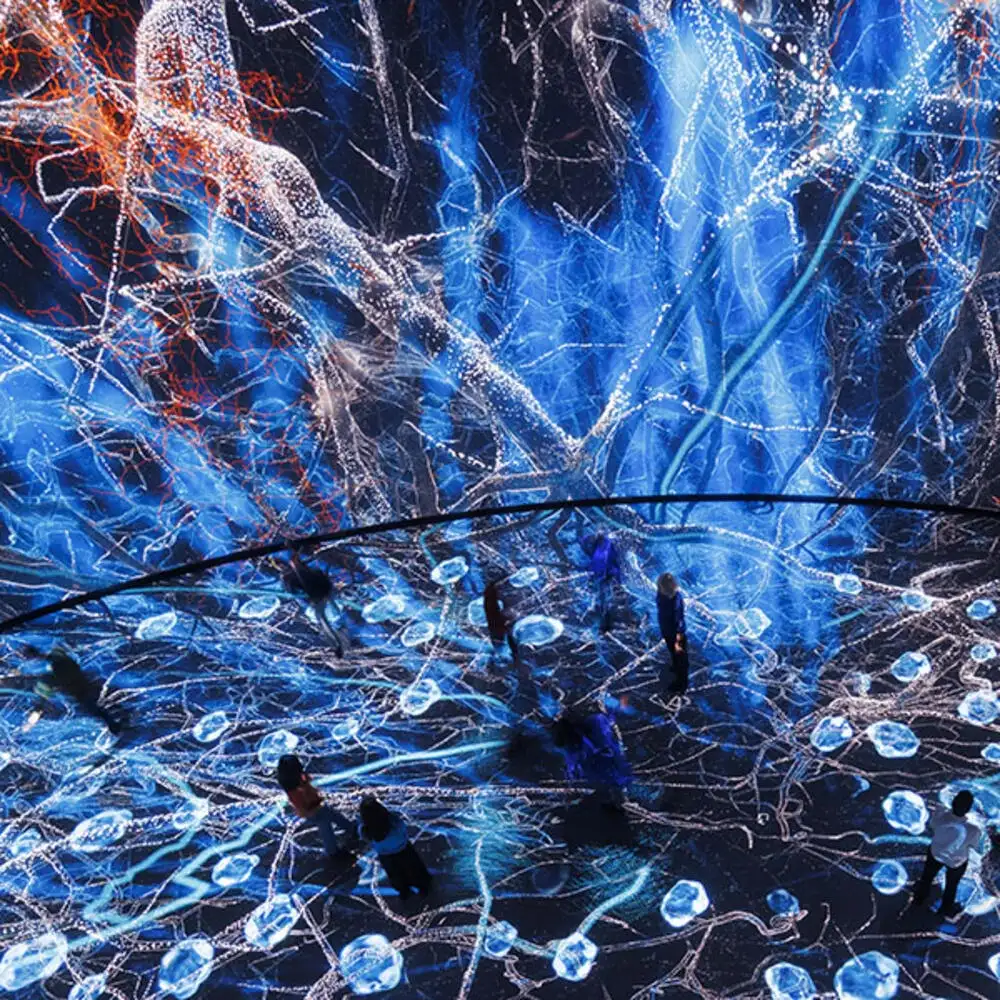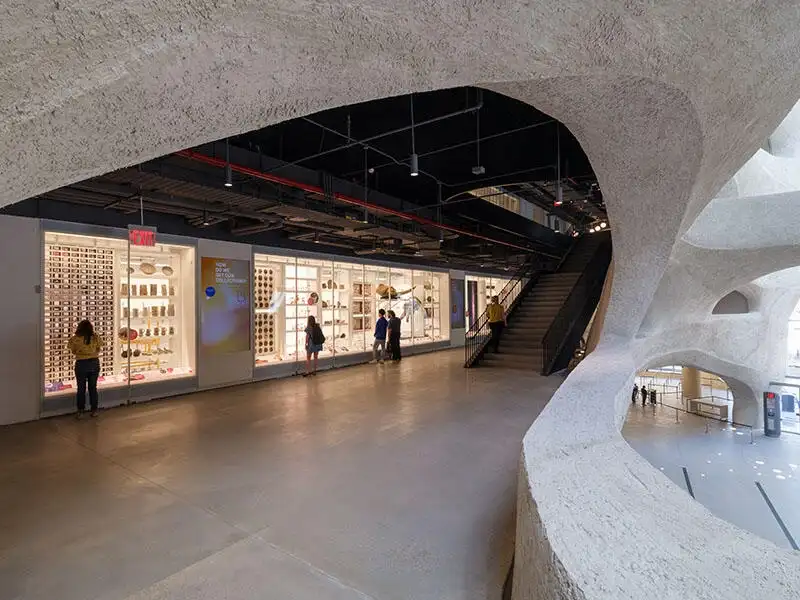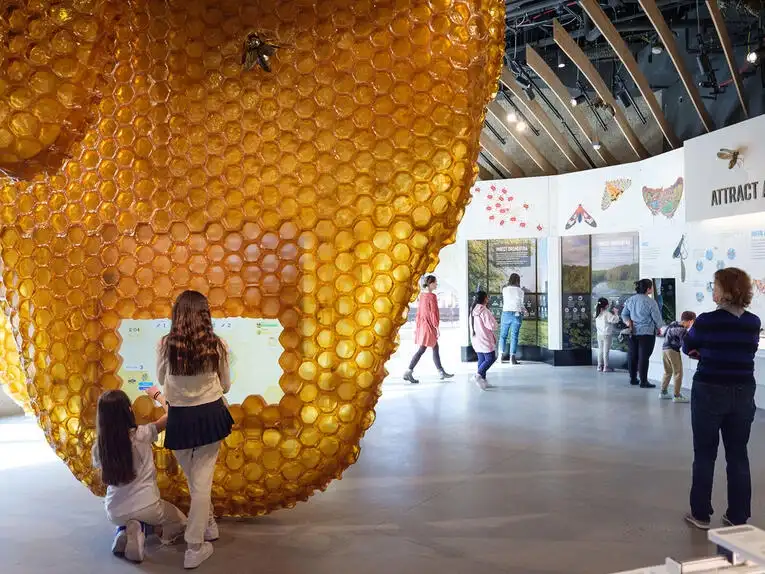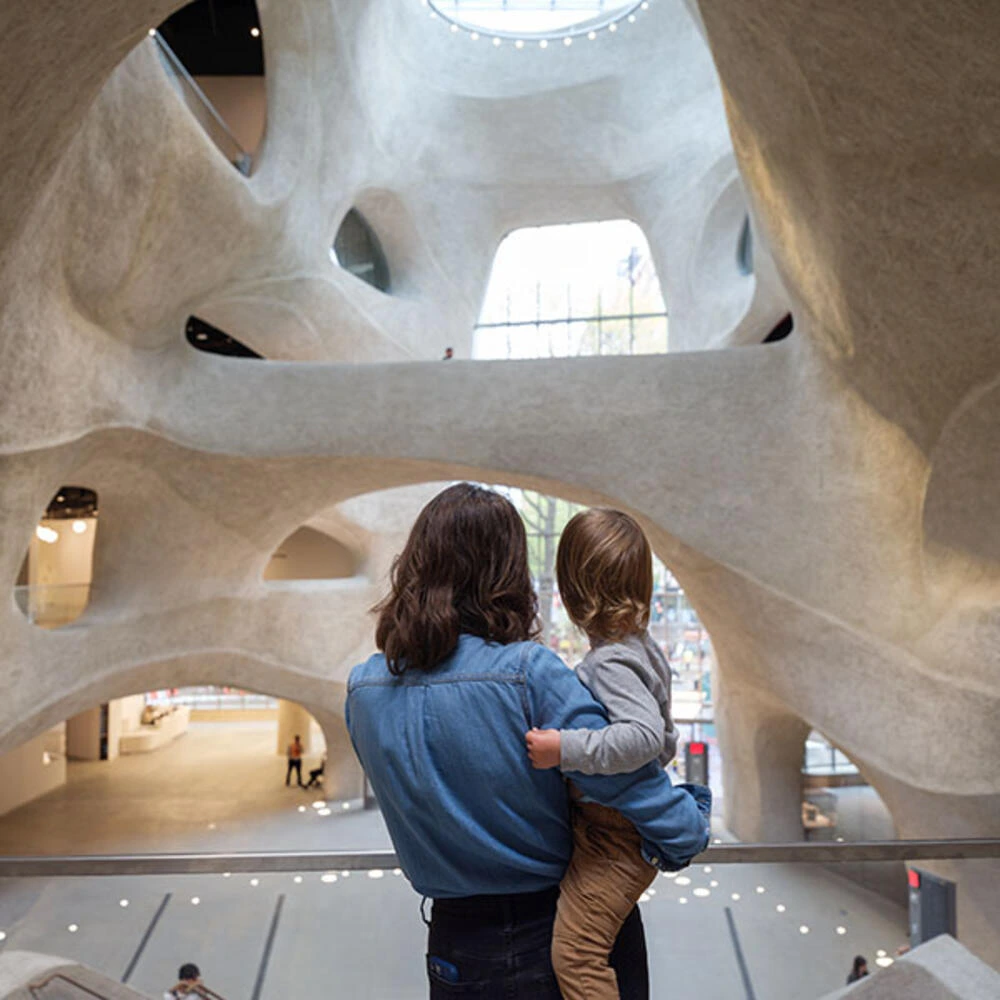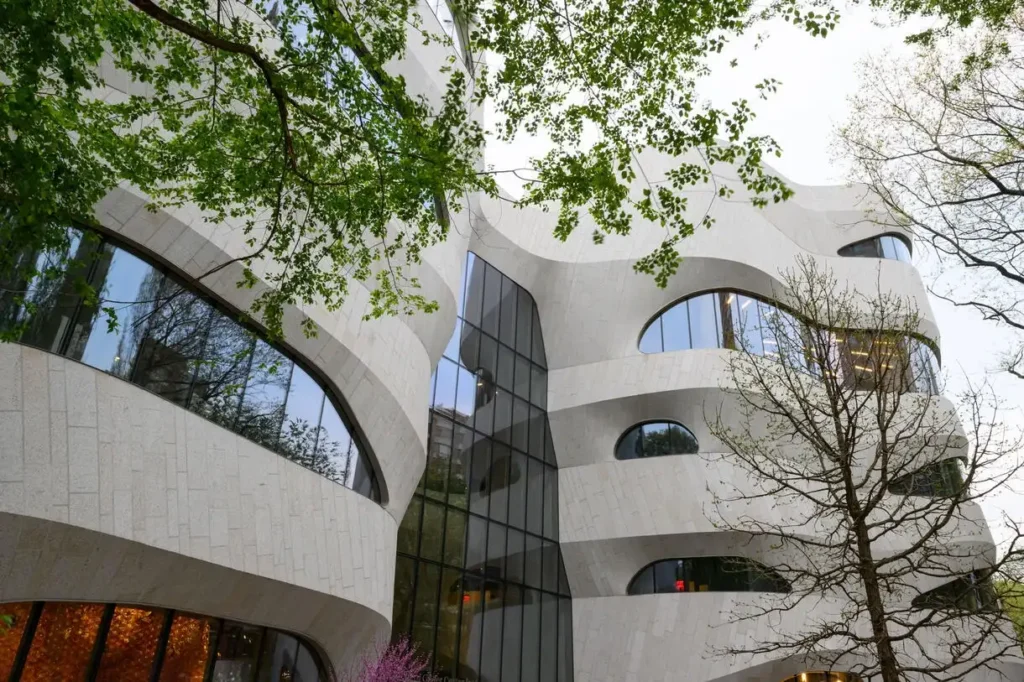2023 has been a sagnificant year for The American Museum of Natural History in New York. It opened to public its new complex, the Gilder Center.
Crafted by Studio Gang, the Gilder Center, a new architectural marvel with a price tag of $465 million and spanning 230,000 square feet, appears to emerge from the very essence of Bedrock.
Its unconventional design features irregular openings that invite visitors into a dynamic world where they can witness a symphony of movement. People move vertically on a central bank of steps designed for sitting. As visitors venture further inside, they encounter a second-floor vivarium teeming with a thousand butterflies. Within the shadowy depths lies “Invisible Worlds,” a 12-minute immersive projection that shows spectators in a display of undersea creatures, brainwaves, and DNA visualizations, all presented as a challenge to the artistic mastery of Van Gogh.
The Gilder Center has several missions: streamlining the circulation within a museum that has undergone ten iterations, showcasing ongoing research, and serving as the American Museum of Natural History’s welcoming, accessible gateway.
Its most exceptional accomplishment lies in its humble ability to spotlight the vibrant activities of people, animals, and organisms, rather than relegating them to a lifeless mausoleum. The museum makes a proposition that we are all part of something living, breathing, something larger.
Contrary to conventional architectural norms, the interior boasts a rough-hewn character, while the façade remains smooth. Nestled between two early 20th-century museum buildings, the Gilder Center’s entrance exudes sophistication, adorned in pink granite from Massachusetts, mirroring the Central Park West entrance. Its cornice aligns seamlessly with that of the older structures.
While the Gilder Center aims to facilitate access for school groups and families, its ground floor’s predominant feature is seating with walnut-clad seats and concrete treads. This spesific design also have some minuses, such as posing challenges for individuals with mobility devices and the numerous parents and grandparents navigating with strollers. Furthermore, the stepped seating is uniform in size, resulting in children’s legs dangling uncomfortably.
One of the project’s most contentious spaces turned out to be its most visually enchanting—the park on the Columbus Street side, masterfully designed by Reed Hilderbrand. Despite initial complaints from the museum’s Upper West Side neighbors about the loss of green space, landscape architects meticulously preserved existing large trees while introducing a new understory of shrubs, native flora, and flowering trees. From a particular angle, the dotted frit on the glass should prevent birds from colliding with the building, ensuring their safety
Museum officials have plans to illuminate the insectarium and vivarium at night, allowing park-goers to continue observing insect life both inside and outside the structure as it subtly recedes into the backdrop.
The Gilder Center represents a commendable endeavor to reconcile the contradictions of a museum with a history spanning over 150 years. It aspires to be dramatic yet non-historic, to showcase the workings of science without clutter, and to enhance circulation while preserving space for gatherings.
